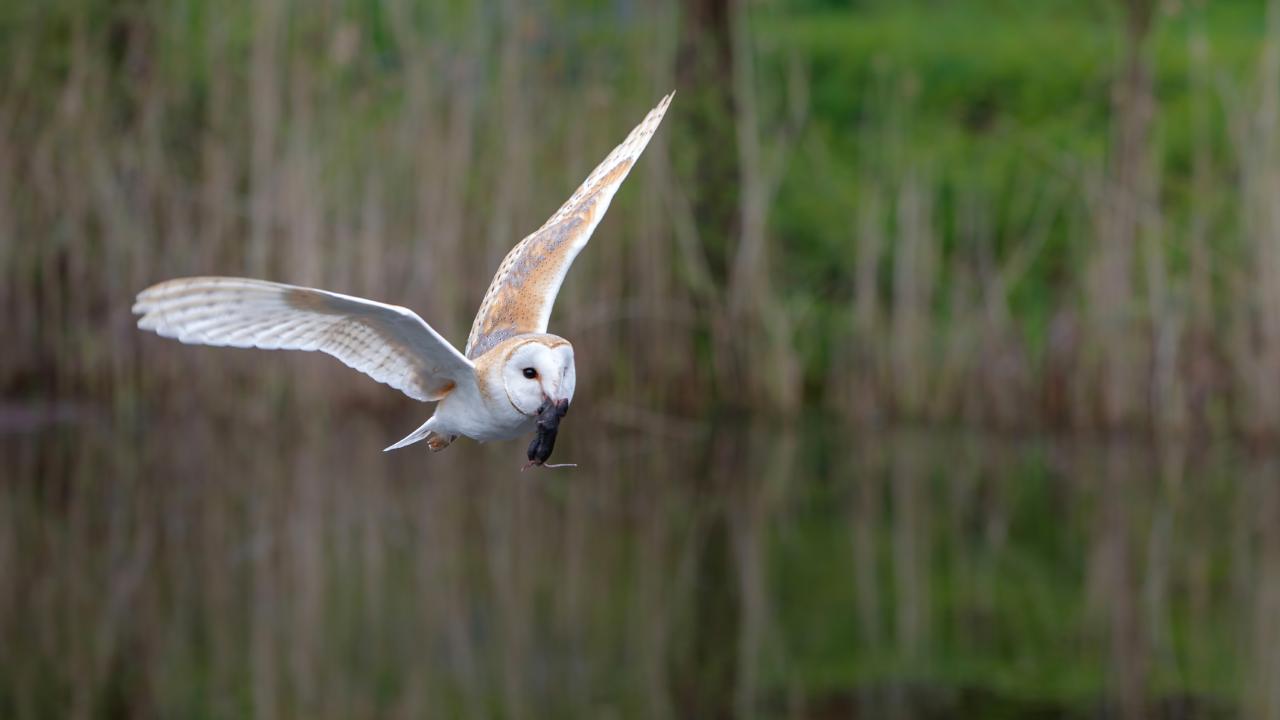
Hoe hopen chemicaliën zich op in terrestrische voedselketens en beïnvloeden ze wilde dieren? TerraChem bestudeert de blootstelling aan chemicaliën van toppredatoren en hun voedselketen (de bodem, planten, ongewervelden, en knaagdieren) en de schade die chemicaliën veroorzaken aan de terrestrische biodiversiteit en ecosysteemdiensten van Europa. Het doel: een efficiënte beoordeling van de milieurisico's en het vergemakkelijken van risicobeheer om zo schade aan wilde dieren te verminderen. Zo draagt TerraChem bij aan het realiseren van de nulvervuilingsambitie van de EU.
TerraChemin het kort
TerraChem brengt een innovatieve benadering om de risicobeoordeling en het beheer van verontreinigende chemische stoffen te verbeteren ter bescherming van de terrestrische biodiversiteit in Europa.
Verontreinigende chemische stoffen zijn een belangrijke oorzaak van biodiversiteitsverlies. Tienduizenden schadelijke, chemicaliën komen in het milieu terecht en kunnen zich ophopen in de voedselketens van wilde dieren. Over welke stoffen moeten we ons het meest zorgen maken? En welke effecten kunnen chemische mengsels hebben op wilde dieren?
TerraChem streeft ernaar de blootstelling van terrestrische biota aan chemicaliën beter te begrijpen en zo het bereiken van de nulvervuilingsambitie van de EU te versnellen. Om dit te bereiken heeft het project vier doelstellingen geformuleerd.
- Monitoring van chemicaliën bij geselecteerde toppredatoren en hun voedselketens in heel Europa. De nieuwste analytische en gegevensverwerkingsmethoden worden gebruikt om grote hoeveelheden chemicaliën per monster te testen en om mengseleffecten op belangrijke metabole processen bij gewervelde dieren te onderzoeken.
- Modellering van de bron-naar-receptorpaden van geselecteerde chemicaliën in het terrestrische milieu. Op deze manier kunnen effecten op soorten en genen worden gekoppeld aan schade aan functionele diversiteit en ecosysteemdiensten.
- Preventie en mitigatie worden ondersteund door de ontwikkeling van hulpmiddelen voor belangrijke toepassingen op het gebied van chemische regelgeving op basis van TerraChem-gegevens. Deze hulpmiddelen helpen de gegevens te vertalen en de meest problematische chemicaliën te prioriteren voor risicobeoordeling en risicobeheer.
- Synthese en gegevensbeheer van de projectresultaten in een TerraChem-gegevensbeheersysteem, dashboard en vroegtijdig waarschuwingssysteem om een one-stop-shop te bieden voor gegevens over verontreinigende stoffen in de terrestrische Europese biodiversiteit.
Wiewerkt hier
Koos Biesmeijer
Wat doetNaturalis?
Naturalis onderzoekt namens TerraChem hoe chemicaliën zich door voedselketens bewegen en wilde dieren beïnvloeden. Daarvoor moet worden vastgesteld welke chemicaliën zich in voedselketens bevinden en welke effecten (vermengingen van) chemicaliën hebben op wilde dieren.
Naturalis zal een aantal casussen bestuderen in verschillende biomen (zoals boerenland, bos en grasland) en verschillende voedselketens. In zes verschillende Europese landen worden de voedselketens van roofvogels, carnivoren en insectenetende zoogdieren onderzocht, met extra aandacht voor de kerkuil.

Meerinfo
Bezoek voor meer informatie over het hele project TerraChem de website.
Of neem contact op met Naturalis' project leider Paola Movalli.
TerraChem is een voortzetting van "LIFE APEX".
TerraChem is mede-gefinancierd door de Europese Unie. Opvattingen en meningen zijn echter uitsluitend die van de auteur(s) en weerspiegelen niet noodzakelijkerwijs die van de Europese Unie of het European Research Executive Agency. Noch de Europese Unie, noch de subsidieverlenende instantie kan hiervoor verantwoordelijk worden gehouden.


